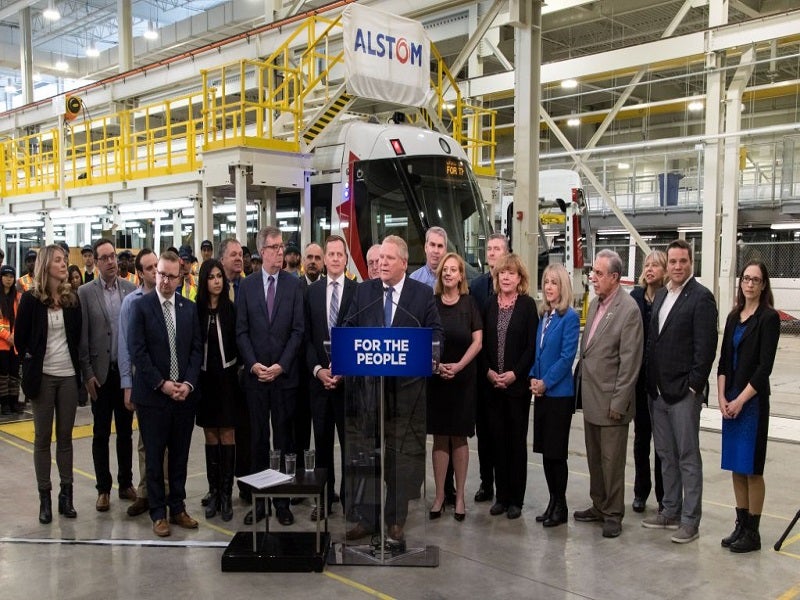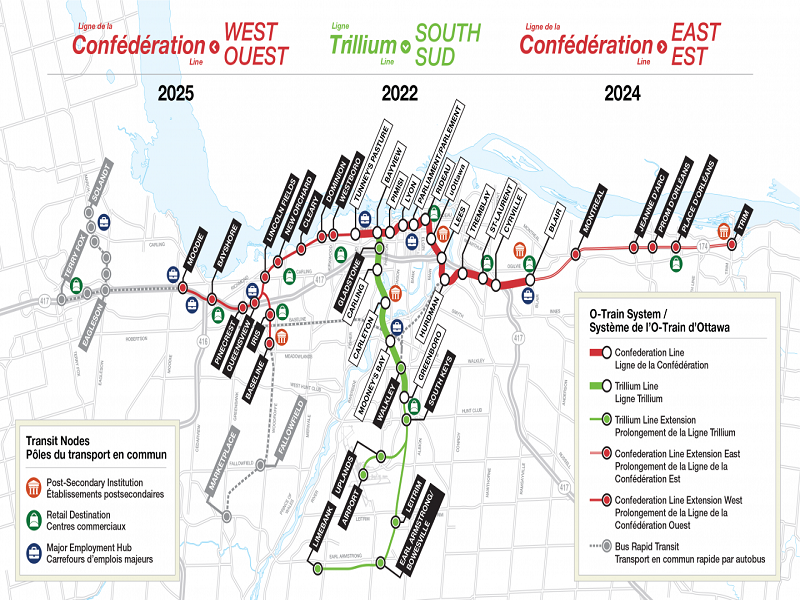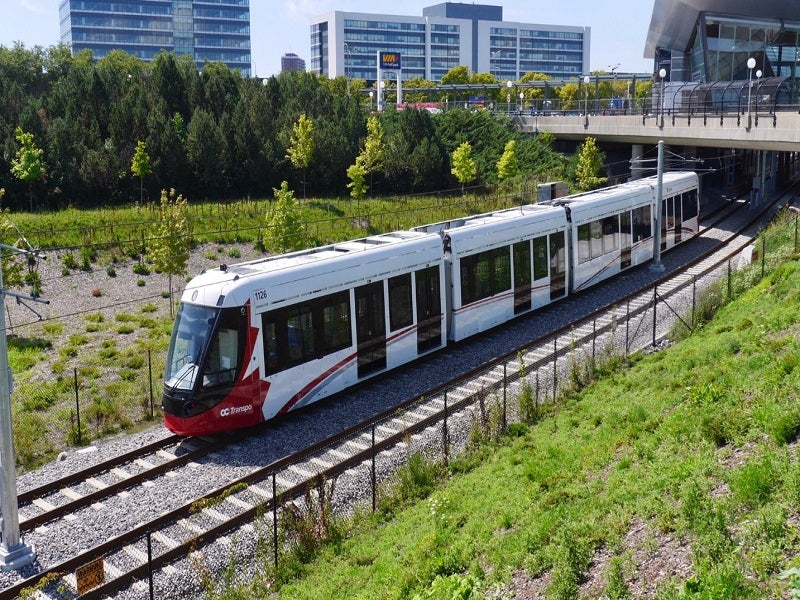Stage Two Light Rail Transit (LRT) is a light rail extension to the under-construction Confederation Line, which is the first stage of the new LRT system in Ottawa, Ontario, Canada.
In 2013, the LRT extension was approved by Ottawa City Council as part of its Transportation Master Plan. The project encompasses three rail extensions, which will extend Stage One to further east, west and south of Ottawa.
The project received environmental approval in June 2015 while approval for the implementation was received in February 2017. The contract award of Ottawa’s stage-two LRT project was approved by Ottawa City Council in March 2019.
Construction for stage one is underway while stage two construction works began in 2019 with completion scheduled for 2025. The extension project is expected to contribute $5.6bn to the GDP.
Stage two LRT project details
The stage two project will add 44km of railway and 24 stations to the O-Train system from Bayshore to Place d’Orleans, and south to Bowesville at Riverside South.
The proposed three extensions include Confederation Line West, Confederation Line East and Trillium Line South.
Confederation Line West will be a 15km extension that starts from Tunney’s Pasture and extends beyond Bayshore to Moodie Drive, with a total of 11 stations. It will extend up to Algonquin College in the south-west.
The ten LRT stations will be located at Westboro, Dominion, Cleary, New Orchard, Lincoln Fields, Iris, Baseline, Queensview, Pinecrest, Bayshore, and Moodie.
The West extension will also see the construction of an additional maintenance and storage facility at Moodie Drive.
Confederation Line East will add another 12km to the line from Blair to Place d’Orléans Station and then extend to Trim Road. It will have five stations at Montreal Road, Jeanne d’Arc, Orléans Boulevard, Place d’Orléans and Trim.
Trillium Line South will be an approximately 16km-long extension with eight stations. It will begin at Gladstone and pass through Walkley, South Keys, Uplands, Airport, Leitrim, Bowesville and Limebank.
The stage-two project also includes an airport rail link from South Keys station on the Trillium Line. The Trillium Line South extension will be first to commence operations in 2022, followed by the East extension in 2024 and the West extension in 2025.
Rolling stock for Ottawa LRT stage two
Contractor Rideau Transit Group (RTG) will deliver 38 Alstom Citadis light rail vehicles (LRVs) for the extension project. These will be equipped with on board communications and train control components. RTG will also be responsible for the building, testing and operation of the vehicles to be completed by 2021.
RTG will also expand the Belfast maintenance and storage facility (MSF) to accommodate the additional fleet to be added in stage two. The MSF will be expanded to house and maintain up to 66 LRVs.
Investment for the stage two extension
The estimated investment for the three extensions under stage two is $4.6bn, which includes $1.09bn that is being contributed by the Ontario Government in partnership with the City of Ottawa.
The federal government announced financing of more than $66m through the Public Transit Infrastructure Fund for the enabling works of the project. Funding will be used for early works and preliminary engineering, acquisition of four LRVs, as well as other supporting works.
The province also made a commitment to provide 50% of the capital costs for the airport rail link and the trim extension, which would cost approximately $315m.
Procurement for the LRT project
The city council worked with existing partner RTG for the stage two project procurement process, which has been undertaken through two competitions.
The first competition was for a $2.5bn design, build and finance contract for the east and west extensions, as well as city-bundled works.
Another was a $535m design, build, finance and maintenance competition for the Trillium Line extension.
Contractors involved
The preliminary engineering and project management services contract for the stage-two LRT project was awarded to Capital Transit Partners (CTP), a joint venture comprising STV Canada Consulting, URS Canada / Aecom, Jacobs Associates Canada Corporation, and Morrison Hershfield.
TransitNEXT was contracted to design, build, finance and maintain the Trillium Line Extension project, while East-West Connectors perform the same for Confederation Line Extension project.
A consortium of Peter Kiewit Sons and VINCI Group with its affiliates will lead the Confederation Line Extension project. Design engineering services are provided by WSP Canada Group and Hatch.
Benefits of extending Ottawa’s LRT system
The extension project will remove approximately 14,000 cars from the road, which is expected to relieve traffic congestion during peak hours. It will also bring 77% of the city’s population within 5km of light rail transit and reduce greenhouse gas emissions by 155,000t over a 25-year period.
Stage two will generate approximately 1,000 full-time jobs.
During peak hours, the line will be capable of carrying up to 24,000 customers every hour in each direction to/from Ottawa’s downtown centre.
Stage two will replace over 900,000 rush-hour bus journeys a year.




